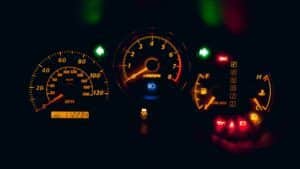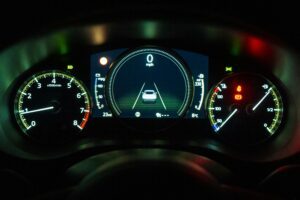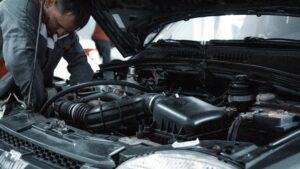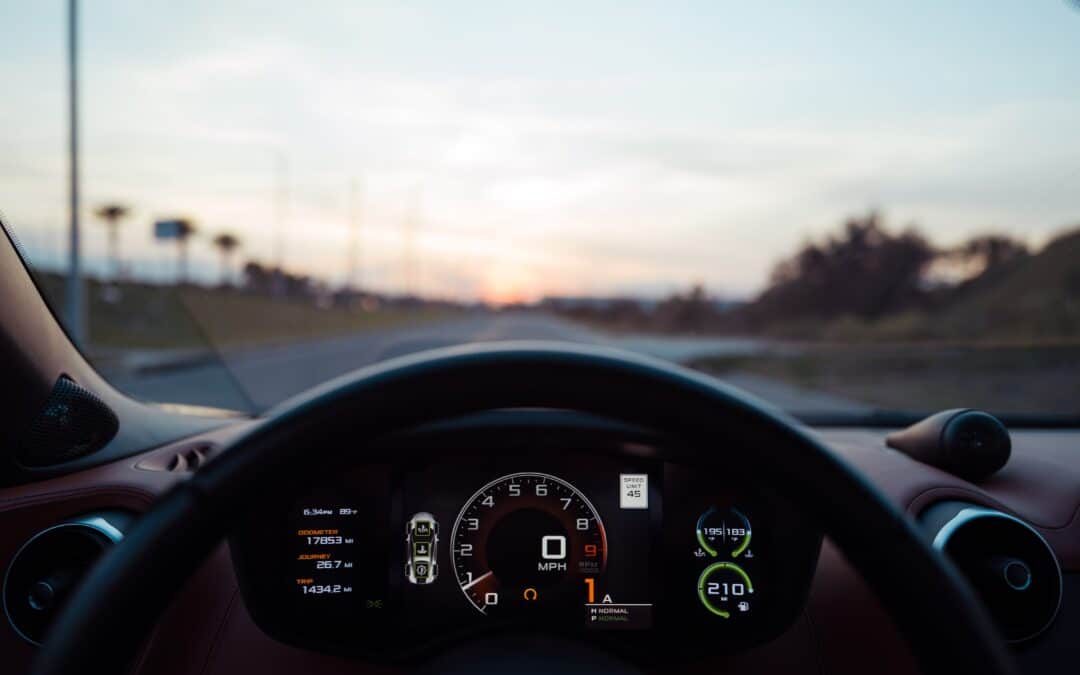Keeping you safe on the road is one of our top priorities. With that in mind, you must understand the meaning of each warning light located on your vehicle’s dashboard behind your steering wheel. Understanding these emergency vehicle lights on your dashboard can be very overwhelming. The last thing we want you doing is spending countless hours of your time reading the owners manual.
We are here to provide you with the best tips and tricks to help you understand your car needs.

Types of Warning Lights
Both older and more modern cars will usually warn you if something needs to be fixed. Some of the common warnings include engine temperature, battery charge, oil pressure, as well as the brake system. If you are currently experiencing issues like these make sure to bring your car to your local repair shop to avoid any unnecessary damage.
- Engine Temperature: This symbol typically looks like a thermometer or expresses the word “TEMP” on your dashboard. This oftenly occurs when your car’s engine has gone beyond its maximum recommended temperature or when your engine coolant level is getting low. The result of an overheating engine can be very detrimental to your car since it can create rough idle, misfire and reduced power and fuel economy.
- Check Engine Light: The engine is the powerhouse of your vehicle. Meaning that your check engine light is one of the most important emergency lights on your cars dashboard. Once this light pops up on your dashboard, it means that your engine is not functioning properly and requires immediate attention.
- Battery Charge: The battery light indicates a variety of things. Although, the two most important things it indicates is either your battery isn’t charging properly or there is a malfunction with the charging system. Driving with this light displayed on your dashboard can be very dangerous since it shows that your battery is low which can cause your car to malfunction.
- Oil Pressure Warning: If this light is displayed, it means that the oil level in your engine has dropped to a significantly low level and new oil needs to be added. Driving with low oil levels will quickly destroy your engine.
- Brake Warning: When the brake system warning light is on and flashing, this could mean your brake fluid is getting low or your parking brake might be in use.
Listening to these emergency warning lights will help keep you safe, as well as maintain the health of your car.

Safety Symbols
Various safety components have been designed into your vehicle’s operating system. To preserve the safety of you and those who ride in your vehicle, it’s important to understand the common dashboard warning lights.
- Tire Pressure Warning: The tire pressure monitoring system notifies you when one or more of your vehicle’s tires is low in air pressure, which could result in tire damage or the dangerous situation of a tire blowout.
- Airbag Warning Light: This light means that there is something wrong with the functionality of your one or more of your airbags.
- Traction Control: This symbol will usually pop up for a few seconds to show you that your vehicle is keeping traction while driving on a slippery surface. However, if the light stays on, it may indicate that you have a malfunction in your traction control system.
- Service Vehicle Soon: If this light is displayed, it usually means more than taking your car in for a “regular checkup.” It tends to imply that either your vehicle’s engine or transmission needs to be repaired or replaced.
- Parking Brake Light: This light usually indicates that your parking brake is engaged. However, if it stays on, you may have issues with your brake pads and want to get your brakes looked at as soon as possible.
All these safety and emergency vehicle lights usually require immediate attention when they stay illuminated. Many cars are left damaged when not properly maintained, leaving the owner with a large hole in their pocket!

Lighting Symbols
Did you know that nearly 50% of all car accidents happen at night? That’s why it’s critical to have proper lighting throughout your vehicle. Proper headlights help drivers see clearer, increase reaction time, and spot potential hazards such as animals or objects on the road. Keep an eye out for the following dash lights:
- Lamp Out: When this light comes on, it means that there is an exterior light on your vehicle that is not working correctly.
- Headlight Range Control: There is an issue with your headlight range control system when this light remains illuminated.
- Front Fog Lights: When you see this light displayed on your dashboard, it means that your front log lights are engaged.
- High Beam Light Indicator: This light means that your high beam or “bright” lights are turned on. Make sure there are no other cars around when engaging your high beam lights, strobe lights, or LED warning lights, as they can potentially cause accidents.
These emergency vehicle lights will warn you when your vehicle’s light bars aren’t working or as well as notify you when certain lights are engaged. Proper visibility is key to ensuring safety while on the road.

Common Vehicle Warning Lights
Besides warning, safety, and lighting symbols, there are a handful of common indicators that every vehicle owner should be able to identify and understand. Knowing what these indicators mean, how to use them, and when to take action is essential to your and others’ safety.
- Hood/Bonnet Open: This indicates that the hood of your car is not properly closed. This can be very dangerous if your hood flies open while you are driving and obstruct your view of the road.
- Low Fuel Level: This symbol is usually represented as a gas tank. Be sure to fill up on gas when this light comes on as you do not want to let your gas tank get dangerously low and be left stranded on the side of the road.
- Hazard Lights: These are usually flashing lights and signify your hazard lights are engaged. You should use these lights when pulling over or if there is a hazard ahead.
- Power Steering System: This indicator means that there is something wrong with the system. The system will usually be disabled until it gets fixed.
- Child Safety Lock: This light will tell you whether or not your child safety lock is engaged or not.
These warning lights may seem like common knowledge you learned in your driver’s education class, but it’s always nice to receive a refresher.

Is your dashboard indicating that you need a repair?
Whether your car’s diagnostic systems are telling you that it needs an oil change, a tire filled up with air, a headlight repair, an engine fix, a brake pad change, or just a regular maintenance check-up, McDowells is here to help! Remember, it’s important to take care of these issues as soon as you see one of these car warning lights to avoid potential damage to your vehicle. Call us today or visit our website to book an appointment.

And as a reminder, always wear your seat belt when driving and never operate a vehicle under the influence of drugs or alcohol.

